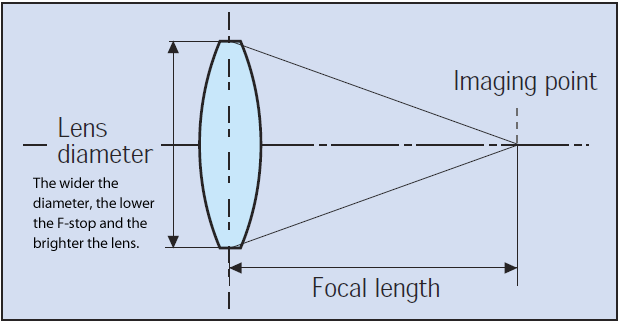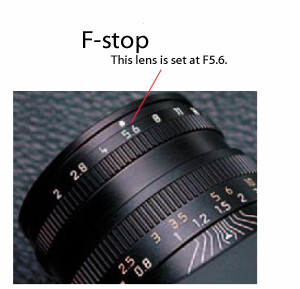Text begins from here.

 |
While a wide variety of lenses are available, they are broadly grouped by focal length and F-stop. Lenses with short focal lengths will have a wide angle of view, while longer focal length lenses will have stronger magnification, creating what is called a telephoto lens. The F-stop value shows how bright the lens is, i.e., how much light will pass through it when the aperture is opened to its maximum. The smaller the aperture value, the brighter the lens. A brighter lens gives a photographer more freedom in a variety of situations. |
 |
Focal length is the distance from the center of the lens to the imaging point (focal plane) where the
light for the image is collected. When a lens is described as a "50mm lens," it is referring to its focal
length. Different focal lengths create different levels of magnification and change the viewing angle of
the resulting photograph. As the focal length value decreases, the lens becomes a wide-angle lens, and
as the value increases it becomes a telephoto lens. |
 Focal Length Ilustration Focal Length Ilustration |
 |
 |
The brightness of a lens is decided by a combination of focal length and lens diameter. If the focal
length of two lenses is the same, the lens with the larger diameter will be brighter. For example, if the
focal length is 50mm and the lens diameter is 17.8mm, focal length divided by lens diameter gives the
lens a maximum F-stop of 2.8. |
 Focal length and F-stop Focal length and F-stop |
 |
 |
F-stop has actually two meanings. One indicatesthe exposure setting's aperture value. The other
shows the overall brightness of the lens. The term "F-stop" indicates the brightness at maximum
aperture and describes lens performance. The brightness at maximum aperture is also dependent on
the diameter of the lens, and as diameter increases so does lens brightness. |

 |
